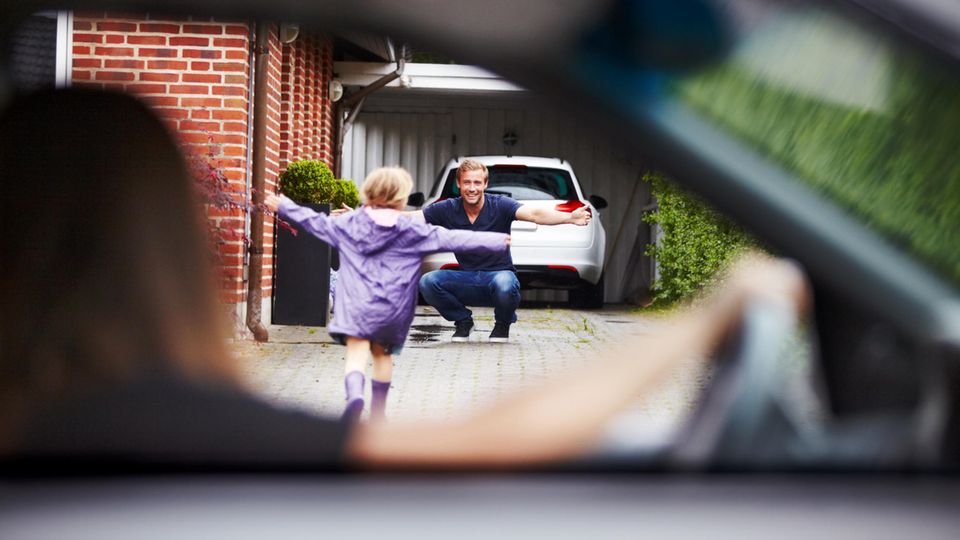The Federal Constitutional Court wants to give biological fathers more rights if they want to look after their children. This also touches on the question of paternity tests – and the number of possible parents.
On April 9, 2024, the Federal Constitutional Court decided in a ruling to strengthen the rights of biological fathers in separated families. This means that in the future it will no longer be impossible for a child to have one mother but two fathers before the law: the biological father who lives apart and the man who is legally registered as the father and with whom the mother lives.
Until now, the Federal Constitutional Court had assumed in its jurisprudence that there can only be two legal parents. In addition, it should become easier in the future for biological fathers to challenge the legal paternity of another man in court. However, the Federal Constitutional Court’s ruling does not yet mean that the biological and legal father will have the same rights in the future, for example when it comes to access to the child.
In its ruling, the Federal Constitutional Court partially ruled in favor of a father from Saxony-Anhalt: He lives separately from his mother and wanted to be considered the father of his biological son, 3, before the law. The man had applied to have his paternity determined. But the mother had her new partner registered as father despite the ongoing application. At the end of the lengthy legal proceedings, the biological father’s application was rejected by the Naumburg Higher Regional Court. One reason for this is that legal paternity has so far been difficult to challenge in Germany if the legal father lives with the child in a family and has already established a relationship with the child. Courts cited, among other things, the well-being of the child, which could be endangered by multiple fathers and role conflicts. The case from Saxony-Anhalt is now to be renegotiated.
Federal Justice Minister Marco Buschmann has also long wanted to strengthen the rights of biological fathers and presented key points for a draft law in January. An innovation in this is supposed to be a kind of barrier clause: If a man wants to prove his biological paternity, no other man is allowed to recognize a child as the legal father while the legal proceedings are ongoing. First, biological paternity must be clarified.
When can a paternity test be requested?
According to the Civil Code (BGB), the father of a child is the man who is either married to the mother at the time of birth or has recognized paternity or whose paternity has been established by a court. The basis for the latter is a paternity test based on DNA analysis. Important reasons for such an investigation are doubts by the father or mother about paternity, inheritance cases and maintenance claims or the search for the biological father of a child, for example after an adoption. Even in the case of family reunification from abroad, an authority can require an ancestry test before issuing a residence permit.
Legal fathers, mothers or children can request the test. However, a paternity test is considered an infringement on personal rights because of the genetic analysis involved, so everyone involved (in the case of minors, all legal guardians) must have given their written consent to the test. With one exception: an alleged biological father cannot normally be forced to take a paternity test.
A paternity analysis must never be carried out secretly. A secret test is considered an administrative offense and can be punished with a fine of up to 5,000 euros. The laboratory also faces a penalty, and the test will not hold up in court.
A special case is the prenatal paternity test before the birth of a child. It can be ordered for serious crimes, such as after the mother has been raped. Then amniotic fluid or a sample from the placenta is taken to obtain cells and pieces of the child’s genetic material and compare them with the DNA of the potential perpetrator and father.
How does a paternity test work and how reliable is it?
Normally, a swab is taken from the oral mucosa with a swab to obtain cells and genetic material. The DNA is isolated from the cells in the laboratory. Then certain short and repeating gene sections are picked out on the long strands of genetic material, so-called “short tandem repeats”. They are reproduced, colored and then their length is determined. How often these snippets appear one after the other on the DNA strands is largely inherited from the parents. Based on the length of the repeating sections, the descent of a child from the father can also be clarified.
The more sections of genetic material that are looked at during the test (often there are around 15), the more reliable the statement becomes. Even if genetic material from the father and mother is present, the accuracy increases because it can then be traced which snippets were inherited from the mother and which from the father.
The cost of a test can be up to several hundred euros; it tends to be more expensive if the test is also to be used in court. The result is usually available after a few days. If none of the typical repetitions from the father can be found in the child, paternity can be 100 percent ruled out. If there are many matches between the child and the father, a probability is calculated. With a probability of 99.999 percent or more, paternity is considered proven.
Why was the previous legal situation often problematic?
If a woman has a child, she is the biological and automatically the legal mother. In a marriage, the spouse is automatically the legal father, even if the child was conceived with another man. If the couple was not married at the time of the birth, the question may be more complicated: in this case, the biological father is not automatically considered the legal father. In this case he must acknowledge paternity. Paternity can also be determined in court.
The legal situation is particularly difficult for biological fathers who want to look after their children but no longer live with their mother. It can be difficult for them to have their paternity determined in court, for example if the mother has already designated her new partner as father or does not agree to a biological paternity determination. These regulations can lead to problems, particularly in separation situations, which applies to both unmarried and married couples.
Can a paternity test be manipulated?
Absolutely, and legal history is full of similar attempts: once a mother presented a false child for the test, once a man sent his brother to be swabbed, another even tried to smear foreign DNA into his mouth. However, many were caught. It is also conceivable that sample sticks could be contaminated with foreign DNA during collection or subsequently mixed up (although this is difficult today because the test tubes are given a code in the laboratory).
In principle, it is recommended – especially in the case of already simmering family disputes – to always take the oral swab in the presence of witnesses, often this is the medical staff, sometimes an employee of the youth welfare office, for example.
What does it mean for children when there are suddenly two fathers?
That is unclear. Until now, case law in Germany has followed the rather conservative approach that there can only be two parents in order to protect the child’s well-being. The idea behind this was that if there were more than two parents, disputes, role conflicts and tussles of authority could arise, for example between the biological and the legal father. However, in a country with millions of patchwork families and countless different parental constellations, this idea can now be considered outdated and controversial.
In addition, there is apparently no clear scientific evidence that children would suffer under more than two parents: in the proceedings of the biological father from Saxony-Anhalt, who had lodged a constitutional complaint, several experts had their say and were questioned whether it was for a child is problematic if it has more than two parents. However, this question could not be answered clearly during the proceedings.




